One of the final major milestones before any Apollo lunar mission consisted of the Countdown Demonstration Test (CDDT), conducted typically about two weeks before launch at Kennedy Space Center (KSC). The CDDT for Apollo 13 was notable for two significant incidents. As part of their preflight training, the Apollo 13 prime crew of Commander James A. Lovell, Command Module Pilot (CMP) Thomas K. “Ken” Mattingly, and Lunar Module Pilot (LMP) Fred W. Haise participated in the final portion of the CDDT. Backup crewmembers John W. Young, John L. “Jack” Swigert, and Charles M. Duke continued their training in the event the prime crew could not make the flight. To practice for the final few hundred feet of the descent to the lunar surface, Lovell completed a total of 12 flights of the Lunar Landing Training Vehicle (LLTV) at Ellington Air Force Base near the Manned Spacecraft Center (MSC), now the Johnson Space Center in Houston, while Young completed 18. The Apollo Food System personnel at MSC made significant improvements in the types of food available to the crew during flight.
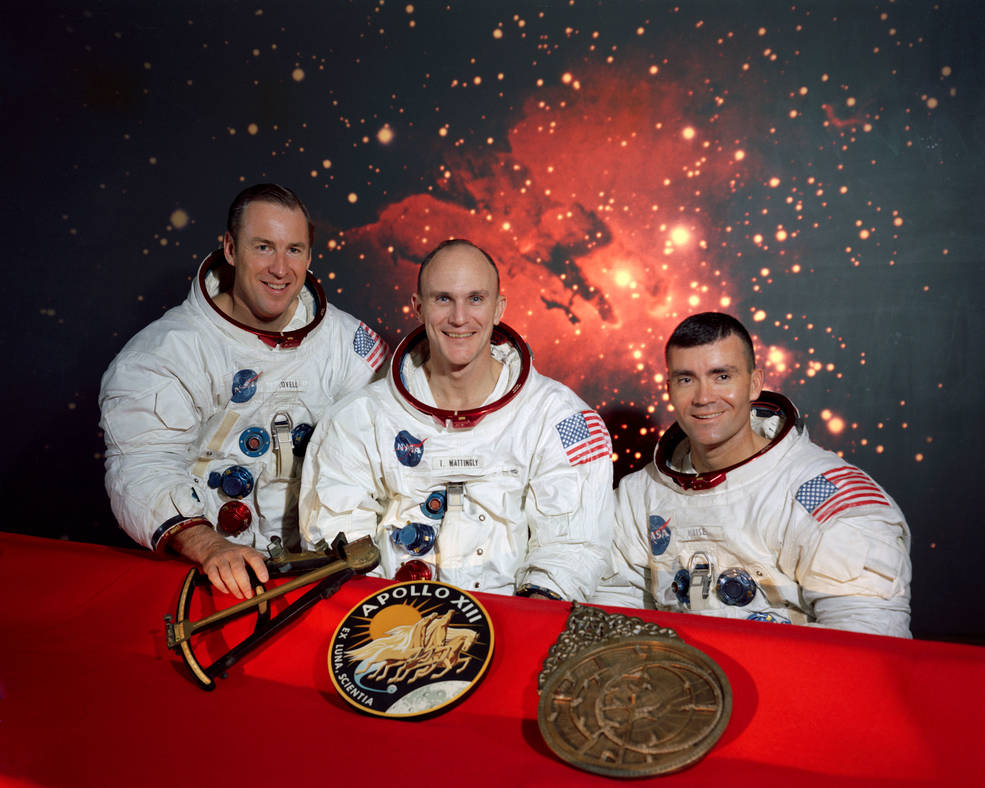
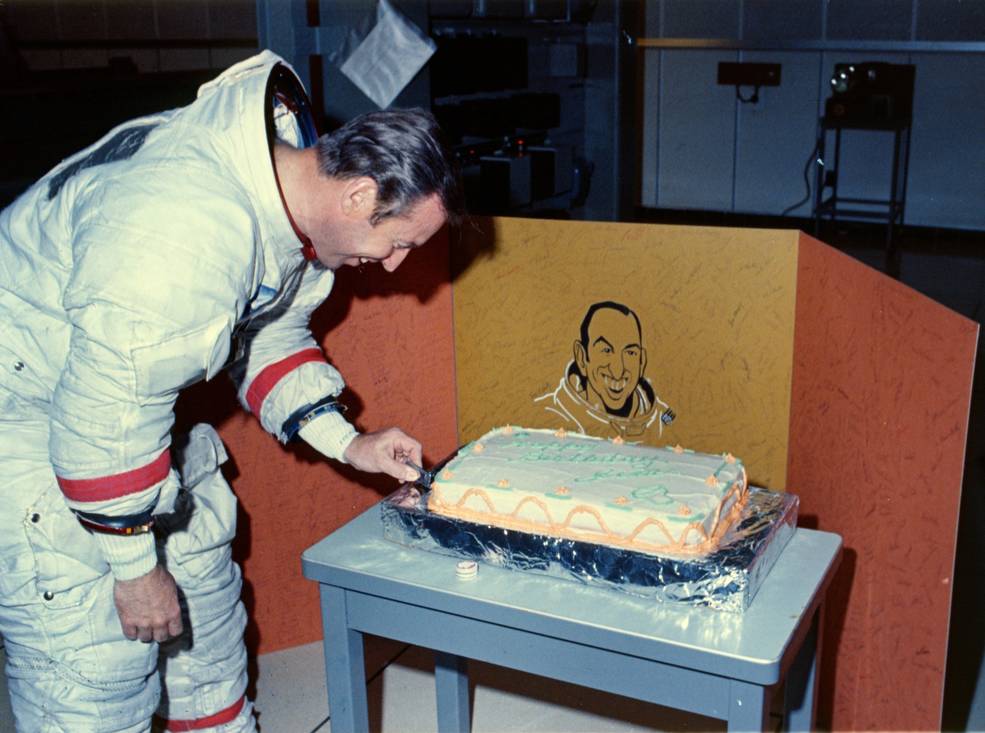
Left: Official photo of the Apollo 13 crew of (left to right) Lovell, Mattingly
and Haise. Right: Lovell cutting into his birthday cake at KSC; note
the red stripes on the sleeves of his spacesuit.
The CDDT essentially rehearsed all the steps of the actual countdown to launch and consisted of two phases. The “wet” phase included fueling of the rocket and continuing the countdown until just before ignition of the Saturn V rocket’s first stage engines at T-8.9 seconds. Engineers then recycled the countdown to T-24 hours and drained the rocket of fuel to conduct the “dry” phase of the CDDT. At about T-2.5 hours, the fully suited crewmembers boarded the Command Module (CM) as they would on launch day and the countdown continued until a simulated T-0. For Apollo 13, the wet CDDT began March 16, 1970, with loading of kerosene into the first stage. On March 25, as engineers pumped super cold liquid oxygen from the large storage tank near the pad through the pipes to the rocket to pre-chill all the hardware prior to filling the rocket’s tanks with the oxidizer, the first incident of the CDDT occurred. Three security guards parked their patrol cars near a ditch where engineers dumped excess liquid oxygen, about 1,100 feet from the Saturn V rocket on Launch Pad 39A. Normally this didn’t cause a problem as the liquid oxygen evaporated to gas that the wind blew away. But on this morning, the wind was calm and a liquid oxygen fog formed in the area where the guards had parked their cars. When one of the guards started his car, the spark from the ignition caused the oxygen fog to catch fire, consuming that car as well as the two others. Engineers temporarily halted the test and drained the lines of oxygen until firemen had the flames under control. No one suffered any injuries and the rocket sustained no damage, but from that time on the security guards parked their cars in a different location. KSC Director Kurt H. Debus appointed a board to investigate the incident.
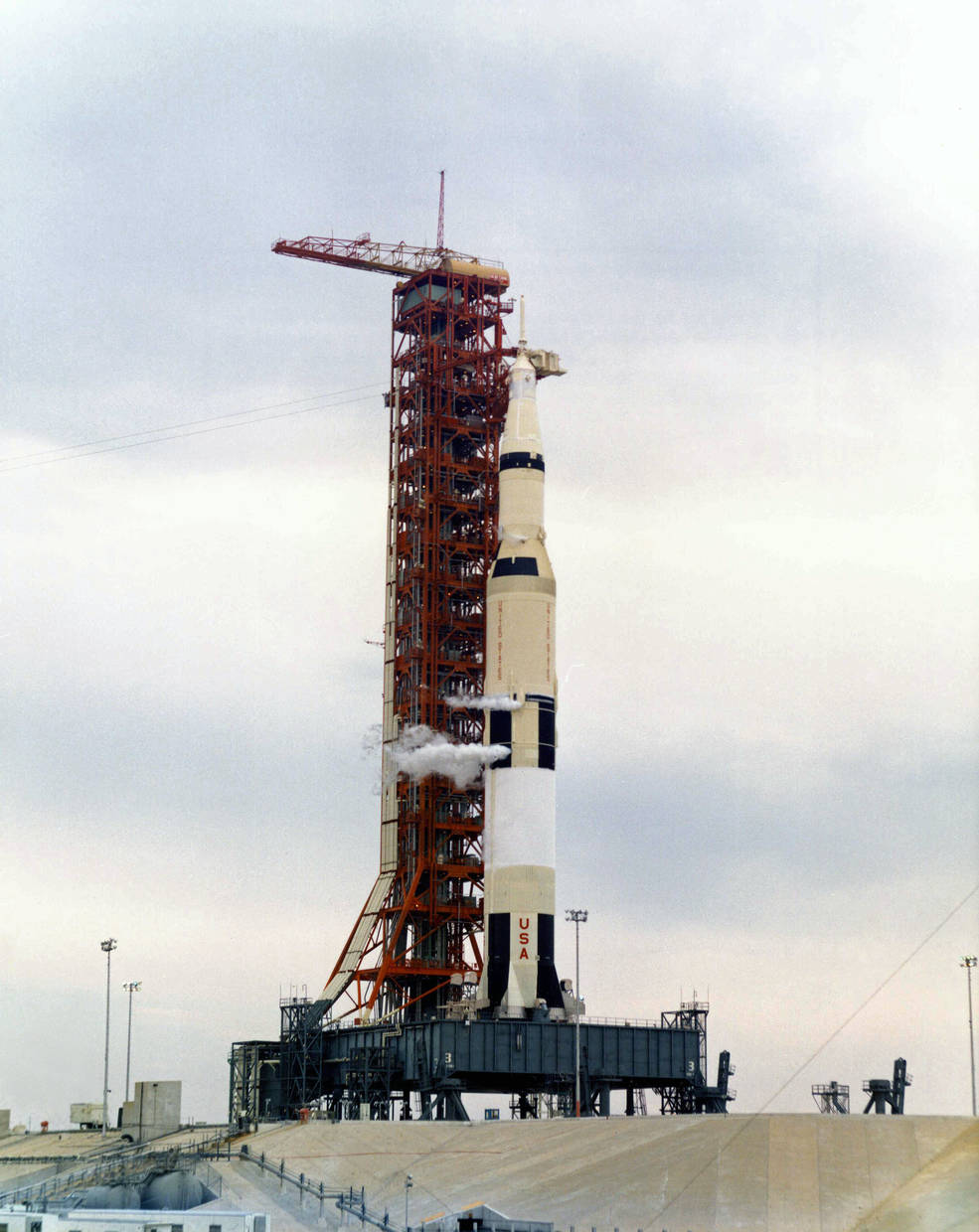
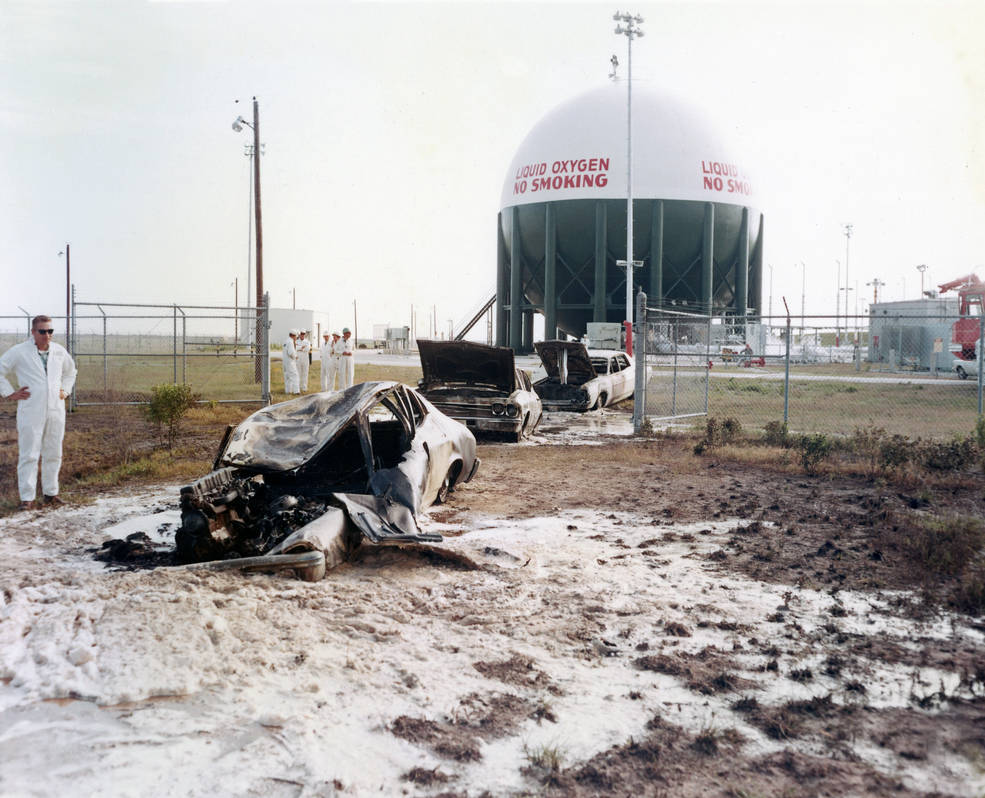
Left: Apollo 13 Saturn V fueled during the CDDT.
Right: Burned out cars in the aftermath of the oxygen fire near Launch Pad 39A.
The second incident, this one to have more far-reaching consequences, also began during the wet phase of the CDDT and also involved cryogenic oxygen, this time in the spacecraft’s Service Module (SM). By this time, the SM’s Oxygen Tank number 2 already had a history. Originally placed aboard the Apollo 10 SM, engineers at North American Rockwell’s (NAR) facility in Downey, California, removed it in October 1968 for modification and in the process dropped it about two inches, slightly jarring an internal fill-and-drain line. Deciding that was not enough to cause any damage, they completed the modification and in November 1968 installed the tank in the SM destined for Apollo 13. When engineers attempted to partially drain the oxygen from the two SM oxygen tanks during the CDDT, tank 1 emptied normally but tank 2 only emptied by about 8%, possibly due to a problem with the fill line. Managers decided to continue with the CDDT and return to the oxygen tank after the test’s completion.
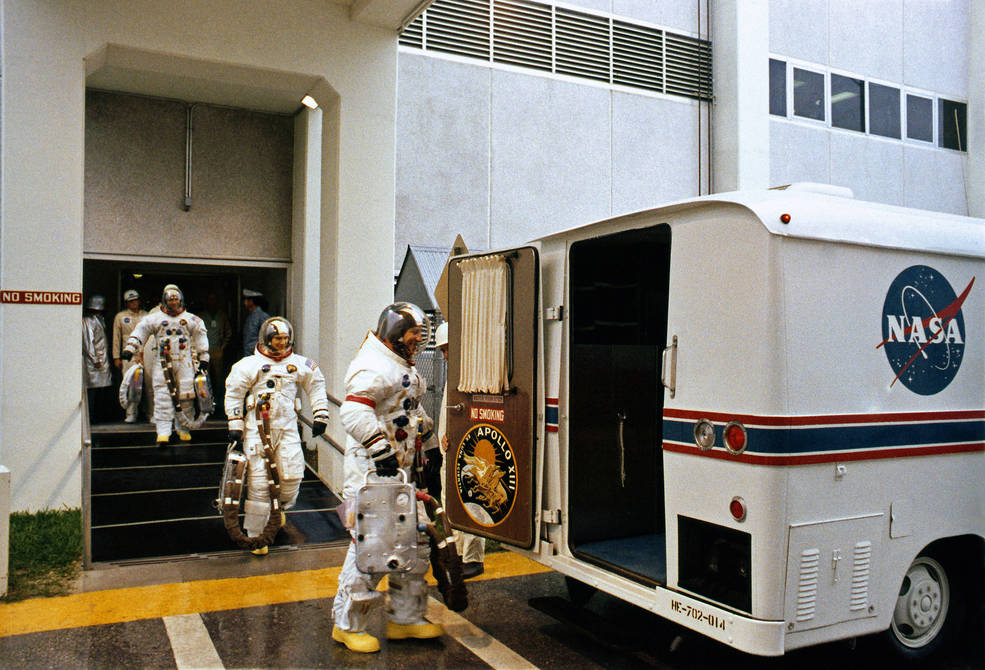
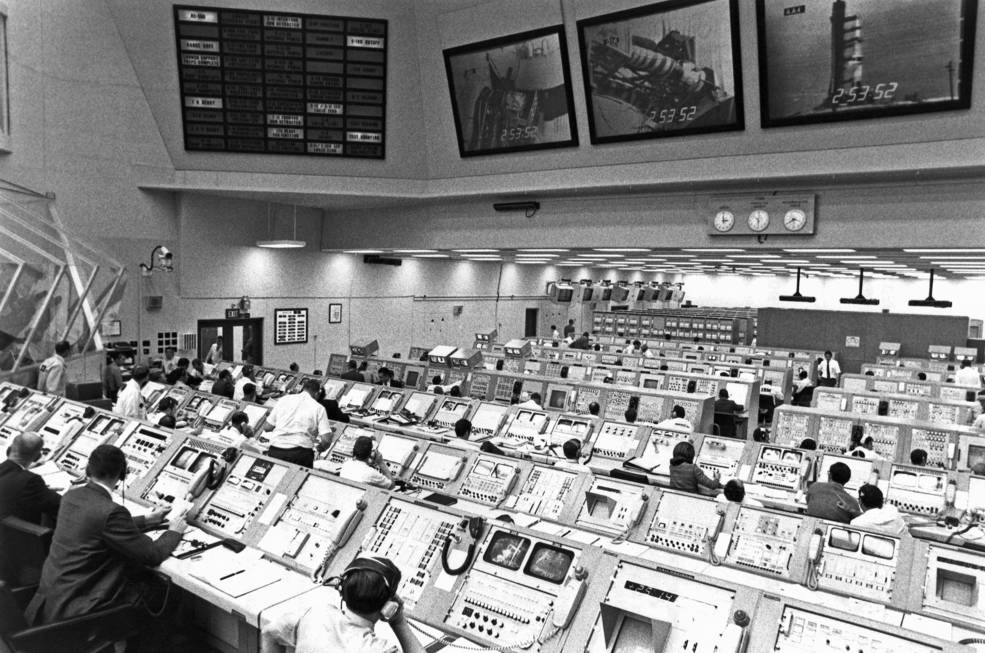
Left: Apollo 13 crew (front to back) Lovell, Mattingly and Haise boarding the van for
the trip to Launch Pad 39A for the CDDT. Right: Controllers in Firing Room 1 during
the Apollo 13 CDDT.
The wet CDDT concluded March 25. That same day, Lovell celebrated his 42nd birthday, complete with birthday cake and an oversize card. Photographs from around this time first show the red stripes on the sleeves and pants legs of Lovell’s spacesuit as well as his helmet. Technicians applied the red stripes only to the commander’s suit so mission controllers as well as the viewing public could distinguish the two crewmembers during their spacewalk on the Moon. On March 26, with the countdown clocks reset, Lovell, Mattingly and Haise suited up as they would for launch and rode the transfer van to Launch Pad 39A. After riding the elevator up to the 320-foot level of the Launch Umbilical Tower, they boarded the CM through the White Room. With controllers monitoring all activities from Firing Room 1 of the Launch Control Center, the dry CDDT concluded without incident, stopping at a simulated T-0. The three astronauts returned to their regular training activities.
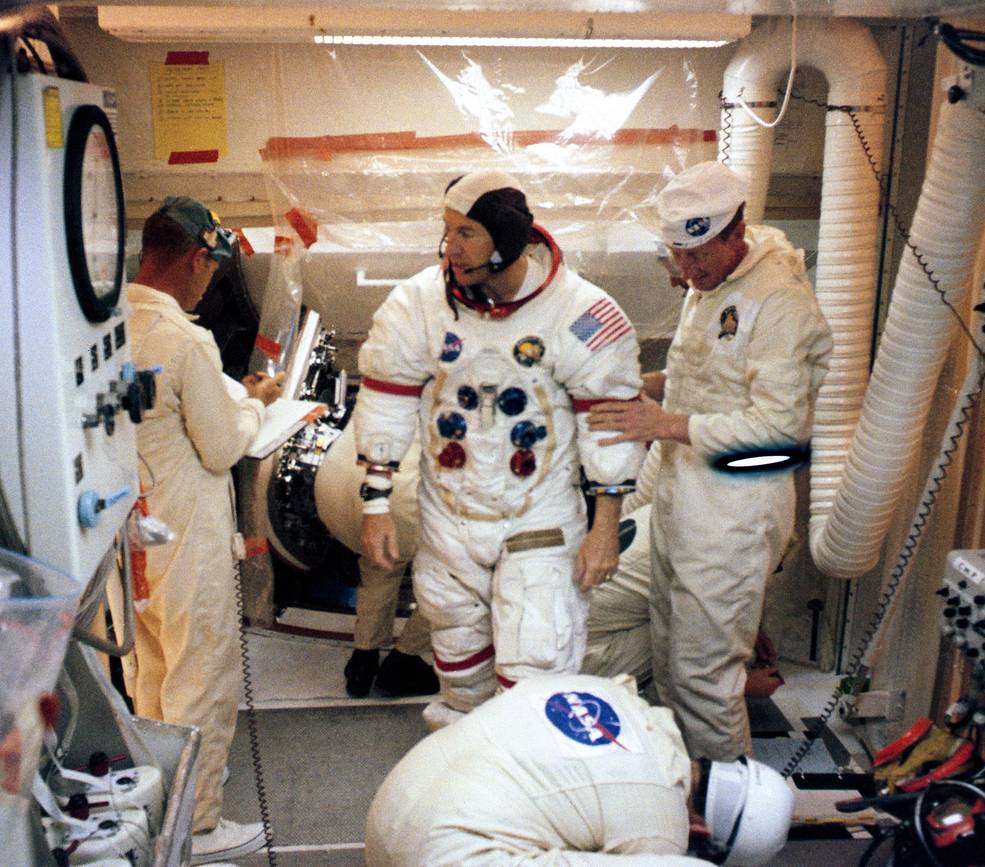
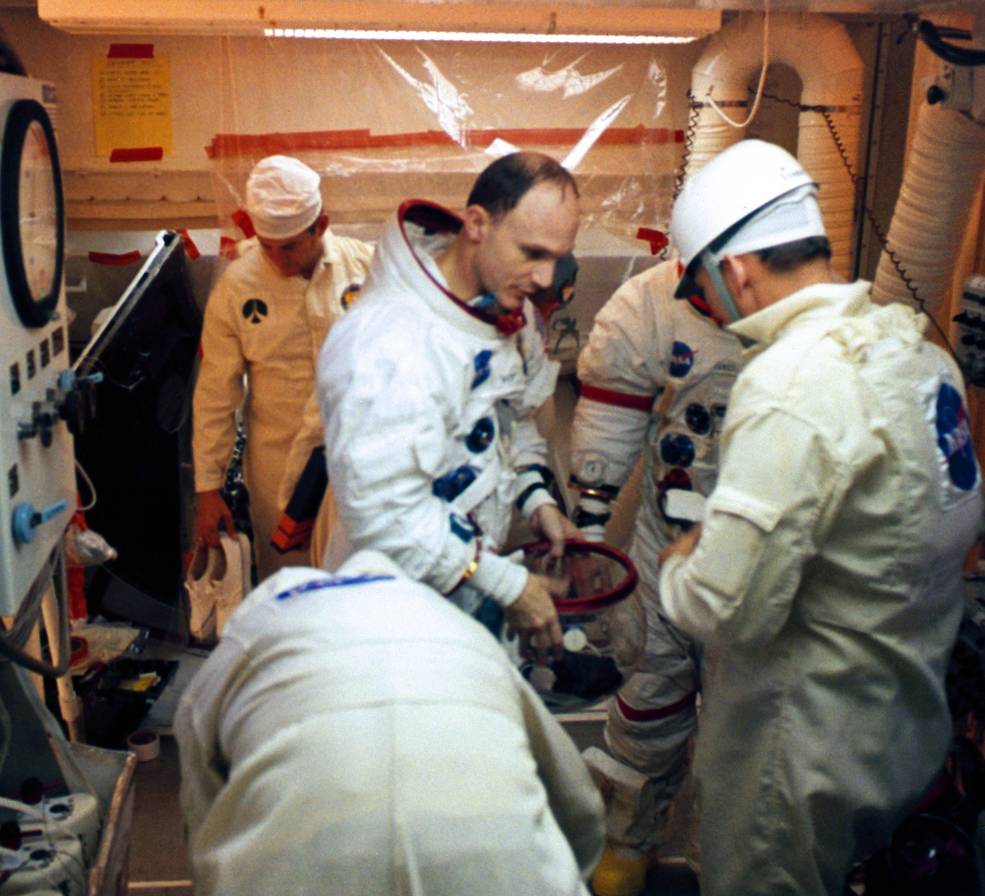
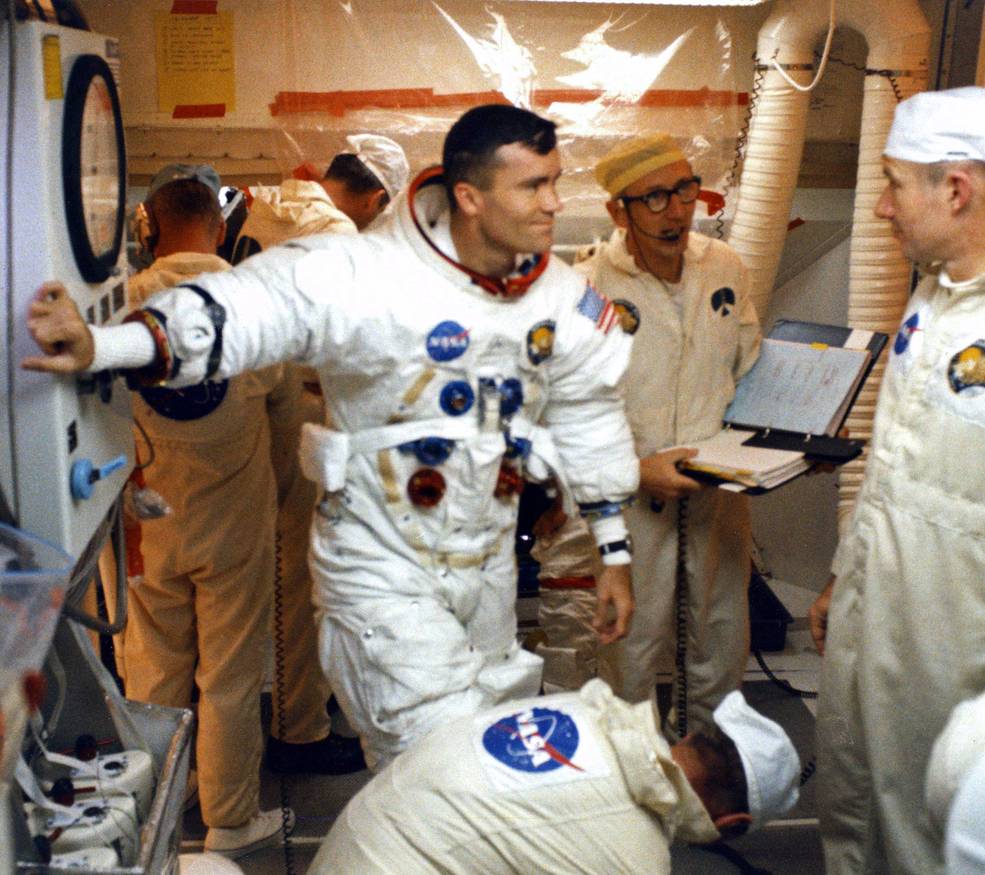
Apollo 13 astronauts (left to right) Lovell, Mattingly and Haise emerging from the CM at the conclusion of the CDDT.
The day after the end of the CDDT, engineers returned to the balky SM oxygen tank, attempting to vent the remaining oxygen through the fill line and only reducing the quantity to 65%. They attempted another normal detanking procedure and tank 1 emptied as expected but tank 2 did not, despite repeated efforts using higher pressures. They next attempted to boil off the oxygen using heaters and fans in the tank, powering them using 65 V ground support equipment power. The tank finally emptied after eight hours and five heater cycles. What was not known to the engineers is that switches in the tank’s heater circuit were rated only to operate at the 28 V DC power supplied by the spacecraft. The switches were designed to open the circuit when the heater reaches 80o F but failed under the higher voltage and it is likely the heater tube reached up to 1,000o F. Because the temperature gauge for the heater could only record temperatures up to 85o F, engineers were unaware of this highly off-nominal situation. The high temperatures very likely damaged nearby Teflon insulation around some wiring. The engineers did not know this at the time, and decided it would not be necessary to replace the oxygen tank, a process that could have possibly jeopardized the April 11 launch date of Apollo 13, resulting in a costly one-month delay. Before launch, engineers filled the tank with the damaged wiring insulation with liquid oxygen, a dangerous situation even as the rocket sat on the pad, but more so during flight, when the astronauts regularly applied power to the fans to stir the cryogenic oxygen.
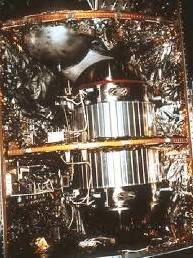
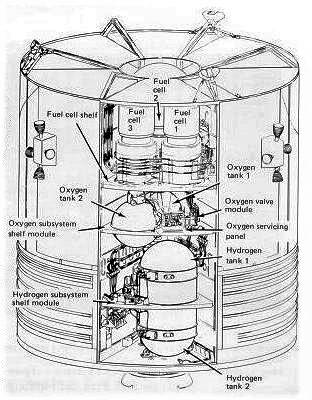
Left: Oxygen Tank 2 (upper left) and Hydrogen Tank 2 (center) in the
Apollo 13 SM during final assembly and inspection at NAR facility.
Right: Diagram of the tanks and fuel cells in the Apollo SM.
Steadily improving over the years, the food consumed by astronauts during spaceflight took a big step forward with Apollo 13. Under the guidance of Rita M. Rapp, head of the Apollo Food System Team at MSC, the menu for Lovell, Mattingly and Haise included several new items. Not counting John W. Young’s contraband corned beef sandwich smuggled aboard Gemini 3 in 1965, bread and spreads to make sandwiches were available for the first time to the Apollo 13 astronauts. With three types of bread (white, rye and cheese) and several spreads (chicken, ham, tuna salad, cheddar cheese, jelly and peanut butter), the crew could assemble a wide variety of sandwiches. Other “firsts” in foods carried on Apollo 13 included pecans to stimulate the astronauts’ appetites, dehydrated orange crystals modified to prevent caking and an instant rice product to be reconstituted by hot water supplied by the spacecraft. Increased use of spoons and bowls provided the Apollo 13 astronauts more nearly normal eating procedures than on previous missions.
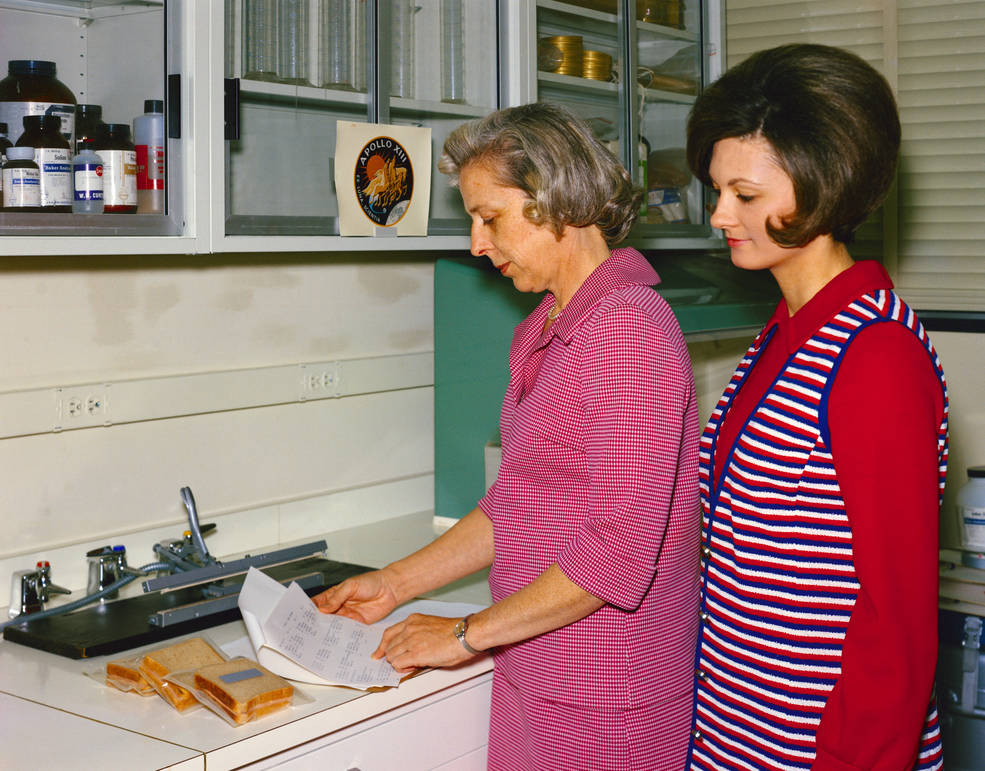
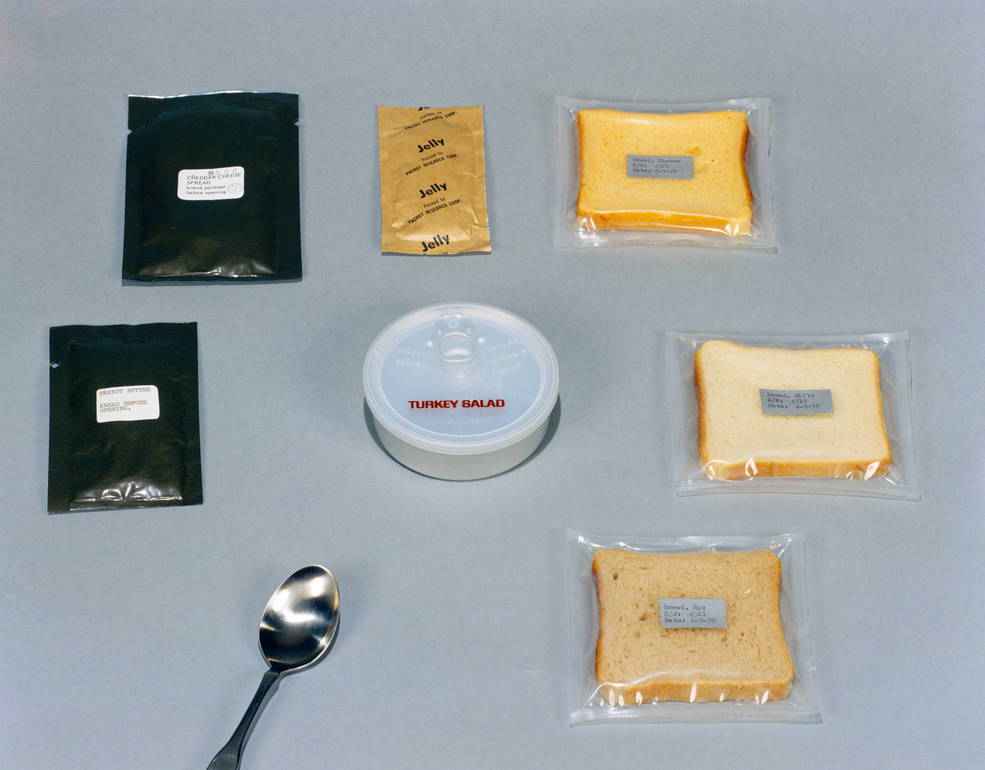
Left: In the MSC Food Lab, dietician Rita Rapp (left) and technician Glenda
Lawrence prepare sandwiches for the Apollo 13 crew. Right: Samples
of the bread and spreads available to the Apollo 13 crew.


























